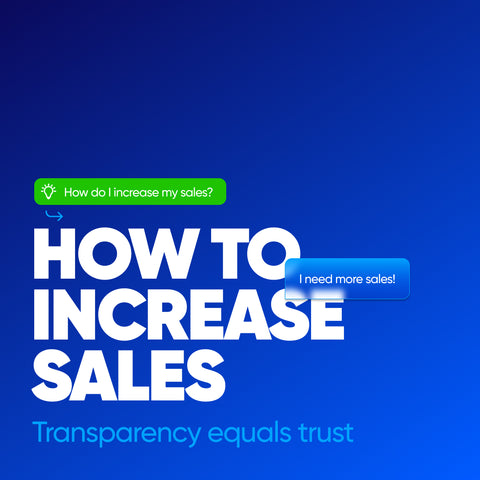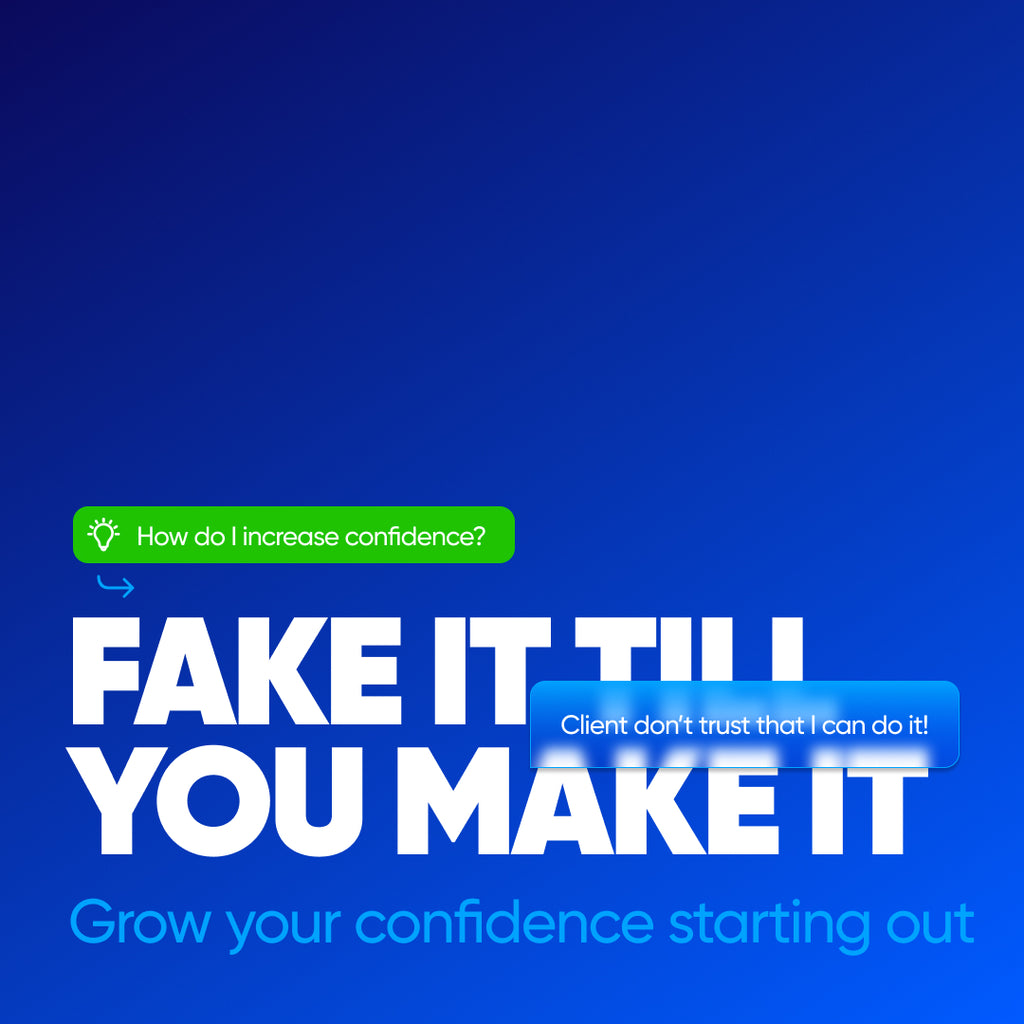As a Graphic Designer and Website Developer, I’ve come to understand that transparency is more than meets the eye. It’s not just about honesty; it’s about building a strong working relationship and setting clear expectations.
As I started working as a Graphic Designer and Website Developer, I thought the only factor was delivering quality work. As time passed by, I realized that quality work delivered to the clients wasn’t everything. Learning to delegate tasks effectively also became crucial, ensuring productivity and efficiency.
Every client wants to know what they are paying for. They want to know the working process, and thus be assured that their investment is in the best hands.
That realization brought a much greater degree of transparency into my business, and it’s made all the difference in building trust and lifting sales.
Transparency in Business: How It's Evolved
Transparency has not been at the heart of business. Organizations have traditionally adopted a “need-to-know” approach, where clients remain in the dark about mechanisms, costs, and other decision-making processes.
With social media and online reviews available to consumers, the power balance in today’s digital age is shifting to the consumer. Today, clients expect openness and clarity. They want to feel involved and informed in every step of the project. Minimal supervision of freelancers can further enhance this transparency by allowing them to work independently while keeping clients updated.
When I started out as a Graphic Designer and Website Developer, I realized very early that the clients who stayed with me longer were the ones who received frequent updates, were explained clearly and transparently, and communicated honestly.
From this observation, I learned that transparency is more than a strategy; it is a value upon which relationships are predicated. As time passed, this value became more conscious. Since then, it has been one of the core parts of my business.
Clear Communications are the Building Blocks of Trust
One of the many things I’ve learned is that clear communication is the basis of a successful relationship and a successful working relationship.
For example, if a client knows precisely what to expect regarding project time frames and the final results, they develop more trust in one’s recommendations. This trust is earned, translating to a better working relationship with repeat business and referral customers.
For example, I always clearly outline my rates upfront, whether it’s an hourly rate or flat fees for certain types of work. There are no surprises. I also use project management tools to track time spent on tasks to ensure a detailed report is sent to clients indicating exactly where their money is going.
Moreover, this not only builds trust but also allows the clients to feel in control, knowing exactly where in the budget that money goes.
The Role of Transparency for Client Retention
Transparency helps acquire new clients and is also the primary method of retention.
I have found that clients are most likely to come back for another project if they feel they can trust me to keep them updated and involved. This is most especially true in the instance of long-term projects where trust and communication are critical.
For instance, on one project, I worked with one single client for a year, with multiple phases and deliverables. Breaking down each phase with concrete milestones and updating the client along with it allowed me to always keep the client satisfied and engaged with the work.
Obviously, the transparency didn’t just help keep the project on track but brought in more work from appreciative clients who value clarity and reliability in the process. Delegating routine tasks to Graphic Designers and Website Developers can also enhance this transparency by allowing more focus on high-value projects and ensuring deadlines are met efficiently.
Demonstrating Your Skills
The other way to develop transparency is to showcase your ability to handle various administrative tasks effectively. Clients like to know that they are working with someone who can deliver. I constantly update my portfolio with completed projects and client testimonials so potential clients have a good idea of what to expect and can make a decision.
Besides this, I stress how dedicated I, as a Graphic Designer and Website Developer, am to ethical working practices. This, of course, is a given, but in a world where people often cut corners, it’s worth stating. Clients like to know that they are dealing with a person for whom integrity matters, and this can usually be the differentiator that helps gain new work.
I have learned it is best to be upfront and clear about what I can and cannot do rather than overpromise and underdeliver. There was a time when I accepted a project that was somewhat over my professional capacities and believed that willing to learn on the job would be enough.
Ultimately, I managed to deliver the work, but the process leading up to it was very stressful for me and the client. Since then, I have ensured that my strengths and limitations are clearly conveyed at the beginning.
Moreover, this honesty has always yielded multiples. The clients feel much better knowing exactly what they’ll be dealing with from the outset, thus instituting realistic expectations right from the beginning.
Furthermore, by positioning oneself on core strengths, one is much better placed to deliver higher quality, which in turn increases customer satisfaction and leads to more references.
Transparency in Pricing and Deliverables
Clear pricing
Another major characteristic of transparency is clear pricing. Initially, I was not sure if it would scare away clients if I mentioned rates directly. I quickly learned that not being upfront and forthcoming about pricing only led to confusion and mistrust.
Today, as a Graphic Designer and Website Developer, I make sure every client knows exactly what they're paying for before we even start working together. This has helped me avoid uncomfortable conversations down the line and has helped the clients make decisions much faster.
Keeping to my deadlines
Dependability is what is needed to build successful relationships with your clients.
For instance, I utilize tools like Google Drive as project management software to keep everything neat and around me. This way, clients can easily track or follow up on where things are, what has been done, and what comes next.
This transparency in my workflow has been one of the key elements of allowing me to manage multiple projects.
Impact of Clear Deliverables
Clear deliverables reduce misunderstanding and conflict as clients know what results they will get.
My goal is always to ensure that, as a Graphic Designer and Website Developer, I can send detailed proposals that clearly state the scope of work, timeline, and pricing for the project. These proposals also set very clear expectations and serve as good references throughout the project. This is especially important when onboarding a new freelancer, as it helps them acclimate and learn effectively.
Being Transparent about Setbacks
Transparency doesn’t always mean sharing the good stuff; it also means being transparent when things aren’t going right.
Quite a few times, I have encountered technical problems or other challenges in a project that could delay its completion. Rather than sweep such issues under the carpet, I communicate them to my clients. This is because communicating the status quo clearly and how I intend to solve the problem helps me retain their trust and keep the project on schedule. Similarly, transparency within sales teams is crucial for sales reps to close deals and achieve quotas effectively.
The Long-Term Benefits of Handling Setbacks Transparently
Perhaps the biggest advantage of handling setbacks transparently is that it puts resilience into client relationships.
Their time is best utilized in activities other than assuming everything is fine; instead, they value a partner who can sort out setbacks with the utmost integrity.
Focusing on your client’s success will turn potential crises into opportunities. Also, fostering transparency within sales teams can enhance performance and improve outcomes.
Building Long-Term Success
Transparency is not just a short-term approach; it’s rather an investment in your long-term success. Suppose the clients know they can rely on your words. In that case, they will most likely remain longer, refer you to others, and give positive feedback, which allows you to build yourself as reliable and trustworthy -a reputation worth its weight in such a competitive market. A transparent sales team can also enhance performance and accountability, leading to better results.
In fact, I have found through experience that transparency creates opportunities that may never have otherwise existed for me.
For example, being upfront with my clients about my availability and working hours has allowed me to move successfully into a global business model of working with clients in other time zones. This sets clear expectations about the work hours and response times to help manage remote teams and better regulate how tasks are delegated to ensure desired outcomes for all parties.
Expand Your Networks When You Open Up
One of the most crucial benefits of embracing transparency is the positive impact it has on my professional network and helps me build successful relationships.
Business partners who appreciate and embrace transparency end up referring me to their networks, which involves new opportunities and partnerships. The referrals are further valuable because they are from a point of trust.
Clients feel sure that even if I work as a graphic designer and website developer with their contacts, I handle the assignment with the same level of honesty and clarity.
Actionable Tips for Practicing Transparency
In the interest of bringing more transparency into your own business, I would like to propose a few tips that have worked well for me:
When onboarding a new freelancer, start with smaller, manageable tasks to help them acclimate and learn effectively.
Use the Right Tools
Project management software is key to making all this happen. Be sure to invest in a variant that allows time management, task management, and effective client communication. This helps to avoid confusion and assures you that everyone is on a similar page at the end of the day.
Set Clear Expectations
Be it pricing, deadlines, or deliverables, make sure your clients know what to expect. All this builds trust and helps avoid misunderstandings down the line.
Be Honest About Your Capabilities and Delegate Tasks
Never promise what you cannot deliver. If a project is beyond your ability, be upfront and say so. Besides saving time, this will help build a reputation as a dependable professional service provider in the business world.
Communicate Regularly
Letting clients know about the project's progress, any setbacks it may have encountered, or any changes in the scope of the project is quite handy in gaining their trust and keeping the project on track.
Let transparency be one of the major business values at the core of your business organization. Assuredly, when clients see your serious dedication to honesty and openness, they will choose your service over any competitor.
Implementing transparency in daily operations
Using Project Management Software for Transparency
Transparency in real life should not be very complicated. Look at the tools you already use and how to make them work. If you use a project management tool, use built-in features such as task assignment, due dates, and progress tracking. Share those with your clients so they can get a feel for exactly where their project is at any given time.
Recurring Check-Ins with Clients for Routine Tasks
You might also consider recurring check-ins with clients. While these don't need to be particularly lengthy, doing even a quick update on a weekly or biweekly basis can be a great way to ensure everyone stays on the same page. During check-ins, give your client the floor to ask questions and give feedback. Not only does this show that you're committed to transparency, but it also operates as an early-warning system against any hiccups that may arise.
Takeaway
Transparency is not the buzzword; it is the super strong strategy to build sales, client relations, and reputation excellence. To set up a freelancer for long-term business success, you need to open up, get honest, and be clear in your communication, pricing, and deliverables. Delegating routine tasks to freelancers allows you to focus on high-value projects, improve work efficiency, and meet deadlines.
Building trust and a relationship through honesty, forthrightness, and clarity can drive repeat business, referrals, and new opportunities. Become transparent, and you will see an increase in sales and peace of mind knowing your clients trust and value your work.

How to Increase Sales Through Transparency




